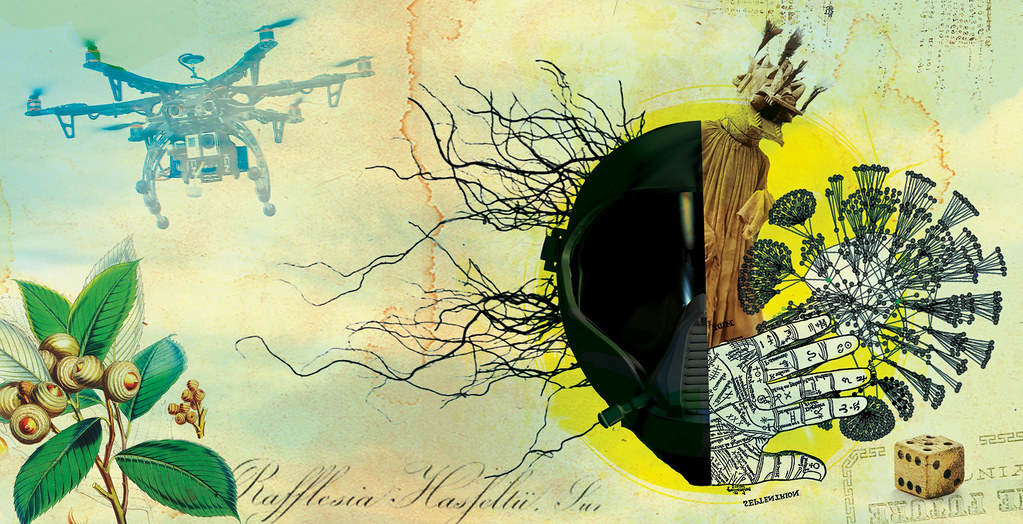A Futurist's Fieldguide
Introduction
A Futurist's Fieldguide is a workbook and manual for people interested in experimenting with futures techniques in practice. The guide presents a range of approaches to thinking and talking about as well as prototyping the future. In particular, we focus on participatory and experiential methods that can be used in unpredictable settings. One of the central concerns is how and why 'futures' can provide useful methods for increasing agency, developing a futures literacy, improving understanding of complex issues, encouraging co-creation of our collective futures, or becoming more insightful inhabitants of the long now.

To describe the creative process of exploring futures, we use the term 'futuring'. We could have chosen other phrases such as 'future studies', 'speculative design' or 'strategic foresight', but 'to future' as a verb encapsulates the engaged, active attitude that we believe is essential when sending probes into these realms. Futuring can be a complex activity involving many facets, or it can be as simple as telling a story that begins with 'What if…'. The process can be individual but is often a collective, participatory exercise. It tends to work best when different modes of knowing and learning are involved – from analytical to generative and synthesising, rational to somatic, intuitive and interpersonal.
Futuring is an inherently generalist practice; it relies on breadth and connections between separate fields where specialist in-depth knowledge serves as a contributing rather than central factor. It can often contextualise and provide new insights into the present situation from the vantage point of various futures. Collaborative futuring ranges from informal conversations and structured workshops to long research trajectories and carefully designed experiments.
There are a wide range of approaches that can be used to guide the futuring process towards desired outcomes. We have structured these approaches in three sections: aptitudes, techniques and methods. In the section on aptitudes we talk about mindsets, capacities and principles that can be used to live with and explore uncertainty, be it in the present, past or future, near or far. The section on techniques includes an eclectic collection of relatively simple exercises that can be mixed and matched depending on the context, resources and people involved. Finally there are methods: specific configurations of techniques that are integrated into longer flows and can be applied as a more complete process.
One challenge facing practitioners of futuring is to decide which techniques from the many available will suit their circumstances. We offer several informed suggestions, but otherwise urge readers to explore a variety of combinations – and invent their own techniques where they see fit. We include methods here that have been designed, tested and implemented in a variety of settings by trusted and well-known practitioners.